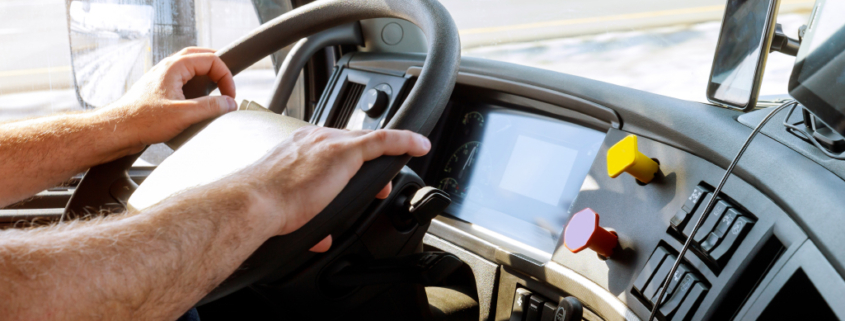Safety for your fleet with technology and planning
A fleet has no greater asset than its drivers. Protecting the health and well-being of your drivers and ensuring they get home safely to their families each night is critical. Your drivers’ behavior and performance are also the key to your company’s reputation, reliability, and profitability. As a result, keeping them safe, retaining them as employees, and building a culture of safety together is of utmost importance.
While driver safety is paramount, many of these safety solutions also come with additional benefits. A well-implemented solution can reduce insurance and collision costs, assist in fleet maintenance management, offset the impact of volatile fuel prices, and provide both high-level visibility into how your fleet is running, and profound insights into individual driver behavior. The better prepared businesses are to implement these safety solutions, the more success they will find. This data is taken from the Fleet Safety Report 2022.
The study shows that 74% thought GPS tracking was very or extremely effective in helping improve safety, with 68% of those using dash cams. Not only do GPS tracking and dash cams prove to make fleets safer, but training and safety policies set them up for success. Around three fifths of fleet safety professionals surveyed relied on driver training (65%) and written safety policies and procedures (59%) as their key fleet safety strategies. A main sticking point (41%) was turning plans into reality.
What safety strategies are fleets using?
One way businesses have found success in this area is creating policies tailored for this purpose. Many organizations already have policy manuals to detail what they expect from drivers, from speeding to taking breaks. As the technology evolves, so can the policy. Many companies offer templates to make it easier for businesses to fill in the information for a complete policy to add to a manual.
In addition, driver bonuses can help create benchmarks and safety goals, and drivers will know that safety is non-negotiable when coming on to the team, which also helps build a culture that considers safety a top priority. Currently, only 25% of fleet professionals surveyed noted that they used advanced safety technologies, such as fatigue monitoring, in-cab alerts of distracted driving, upcoming hazards, and driver behavior telematics.
Top 10 strategies to prioritize safety at your organization:
1 – Make an organization-wide dedication to focus on fleet safety goals
2 – Use templates for policies and procedures to guide the steps along the way
3 – Have leaders use the technology as an example for others
4 – Lean on your technology provider to help you define and realize your goals
5 – Use telematics alerts and reporting knowing which drivers would benefit most from coaching, and use the data to avoid ‘he said, she said’ type conversations
6 – Establish the KPIs that matter most to your business and track against them
7 – Survey drivers and technicians to understand what incentives will get them on board with your policies
8 – Consider making safety fun through gamification and contests, such as driver scorecards and public rewards for driver improvement
9 – Share overall progress with your team, so they know their efforts are appreciated and contributing to a safer, stronger organization
10 – Understand it takes time to change a culture, but keep going



Leave a Reply
Want to join the discussion?Feel free to contribute!